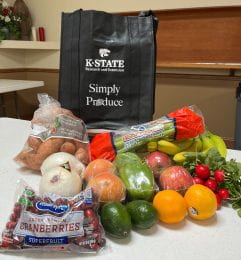Daylight savings time begins every year on the second Sunday of March. This is also a good time to review your spring safety checklist.
 Smoke Alarms – Smoke alarms should be in every bedroom and in the common areas on each floor of a home. Mount them at least 10 feet from the stove to reduce false alarms, less than 12 inches from the ceiling and away from windows, doors and ducts.
Smoke Alarms – Smoke alarms should be in every bedroom and in the common areas on each floor of a home. Mount them at least 10 feet from the stove to reduce false alarms, less than 12 inches from the ceiling and away from windows, doors and ducts.
Three out of every five home fire deaths result from fires in homes with no smoke alarms, according to the National Fire Protection Association. Test your smoke alarms every month and replace the battery at least once a year.
Carbon Monoxide Detectors – Carbon monoxide is an invisible, odorless gas that can kill. CO alarms should be installed in a central location outside each bedroom and on every level of the home. Like you smoke alarms, change the batteries and test them.
Get Rid of Unwanted Medicines – Take your unwanted or expired medicines to a prescription drop box or take-back event near you, or drop by your local Post Rock District Extension office and pick up an easy to use drug deactivation disposal bag.
Spring Cleaning – With the warmer weather comes a desire to shine and polish your home. Keep your family safe around poisons in the home. Keep all chemicals, household cleaners, and medicines in locked cabinets or out of the reach of children. Keep the National Poison Control Center number (800-222-1222) in your cell phone contacts.
By: Brenda Langdon

 The Medicare Part D Low Income Subsidy, sometimes referred to as Extra Help, assists people with limited income and resources with paying for their prescriptions.
The Medicare Part D Low Income Subsidy, sometimes referred to as Extra Help, assists people with limited income and resources with paying for their prescriptions. Do you have small purple flowers popping up in your lawn? This is likely henbit, the broadleaf weed that actually germinates in fall and flowers in spring. Follow the link below to learn about the pros and cons of henbit:
Do you have small purple flowers popping up in your lawn? This is likely henbit, the broadleaf weed that actually germinates in fall and flowers in spring. Follow the link below to learn about the pros and cons of henbit:
 The National Weather Service in Topeka has designated March 6-10 as Severe Weather Preparedness Week in Kansas including a statewide tornado drill on Tuesday, March 7th at 10 a.m. All Kansans are urged to participate in the drill by practicing the plans they have in place for seeking shelter from a tornado.
The National Weather Service in Topeka has designated March 6-10 as Severe Weather Preparedness Week in Kansas including a statewide tornado drill on Tuesday, March 7th at 10 a.m. All Kansans are urged to participate in the drill by practicing the plans they have in place for seeking shelter from a tornado.